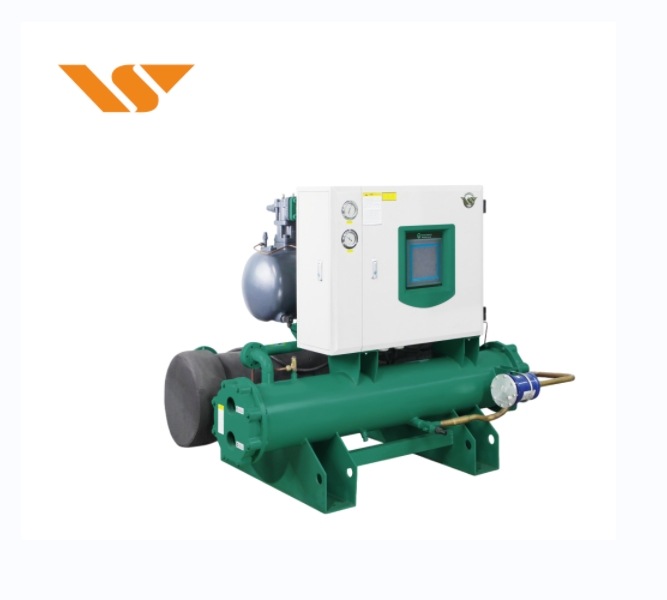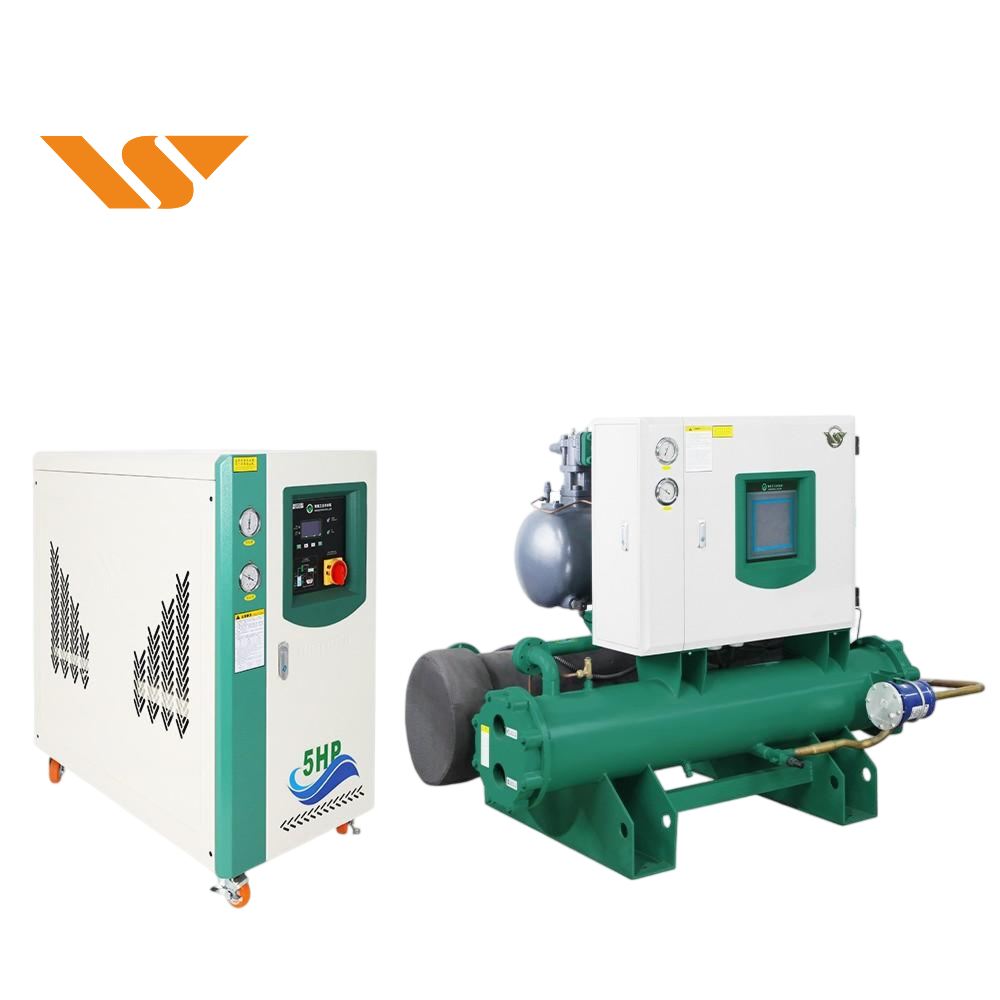How to learn more about screw chiller?
2023-12-26 Page view:
A screw chiller, powered by a screw compressor, boasts greater cooling capacity compared to a scroll chiller. It finds application in diverse industrial settings like chemical plants, printing facilities, automotive manufacturing, large-scale refrigeration in central air systems, and more.

Principle:
The screw chiller derives its name from its pivotal component—the screw-type compressor. Operating on a refrigerant gas, the unit exits the evaporator in gaseous form. As the compressor adiabatically compresses this gas, it transforms into a high-temperature, high-pressure state. The compressed gas undergoes isobaric cooling and condensation within the condenser, transitioning into a liquid state. Upon expansion through a throttle valve, it becomes a gas-liquid mix under low pressure and temperature. Absorbing heat from the cooled material in the evaporator, it returns to a gaseous state. This gaseous refrigerant re-enters the compressor through a pipeline, kickstarting a new cycle—these four steps outline the refrigeration cycle and the core working principle of the screw chiller.
Processes of Screw Chiller: Air-cooled and Water-cooled Types
Screw chillers are categorized into water-cooled and air-cooled variants based on dissipation methods:
Water-Cooled Screw Chillers: Consisting of compressors, evaporators, condensers, refrigeration accessories, and electronic control systems, these chillers require additional auxiliary equipment for heat exchange. The supporting gear includes a cooling water tower, circulating water pump, and double-layer stainless steel insulated water tank.
Air-Cooled Screw Chillers: While sharing a similar configuration to water-cooled versions, these chillers utilize a fan for heat dissipation. They employ a fin condenser to exchange heat with the air, eliminating the need for a cooling water tower. However, they still necessitate a circulating water pump and a double-layer stainless steel insulated water tank.
Classifications:
Screw chillers branch into industrial, medium temperature, and low-temperature variants based on water supply temperature range:
Industrial Screw Chiller: Providing 5~15℃ chilled water or ethylene glycol solutions, it caters to various production processes, offering cold sources for ice storage, low-temperature air supply, and central air conditioning. These units can be customized for larger temperature differences or higher outlet water temperatures. Refrigeration capacity ranges from 94KW to 3360KW.
Medium Temperature Screw Chiller: Offering outlet water temperatures between -5℃ and -45℃, these chillers employ semi-closed screw compressor units. They serve applications in chemical industries, medicine, cold storage, and ice rinks with a refrigeration capacity of 55KW to 2000KW.
Low Temperature Screw Chiller: Providing outlet water temperatures from -45℃ to -110℃, these units utilize two-element or three-element cascade screw refrigeration systems, ensuring high energy efficiency and stability. These units can be customized for ultra-low temperatures, anti-corrosion, and explosion-proof requirements.
Key Selection Considerations:

Control Parameters: Refrigeration performance coefficient, rated cooling capacity, input power, and refrigerant type are critical parameters for screw chillers.
Load and Purpose: Consider cooling load and purpose for efficient selection. Long-term low load operations benefit from multi-head piston or screw compressor units, aiding in adjustment and energy savings.
Performance Coefficient Values: Prioritize units with higher performance coefficient values for better efficiency, considering the varying load proportions during operation.
Nominal Working Conditions: Pay attention to the factors affecting actual cooling capacity, such as cold water outlet temperature, flow rate, cooling water inlet conditions, and fouling coefficient.
Operating Range and Conditions: Ensure the chiller's normal operating range aligns with specific requirements, adhering to temperature and motor power limitations.
-
2025-01



